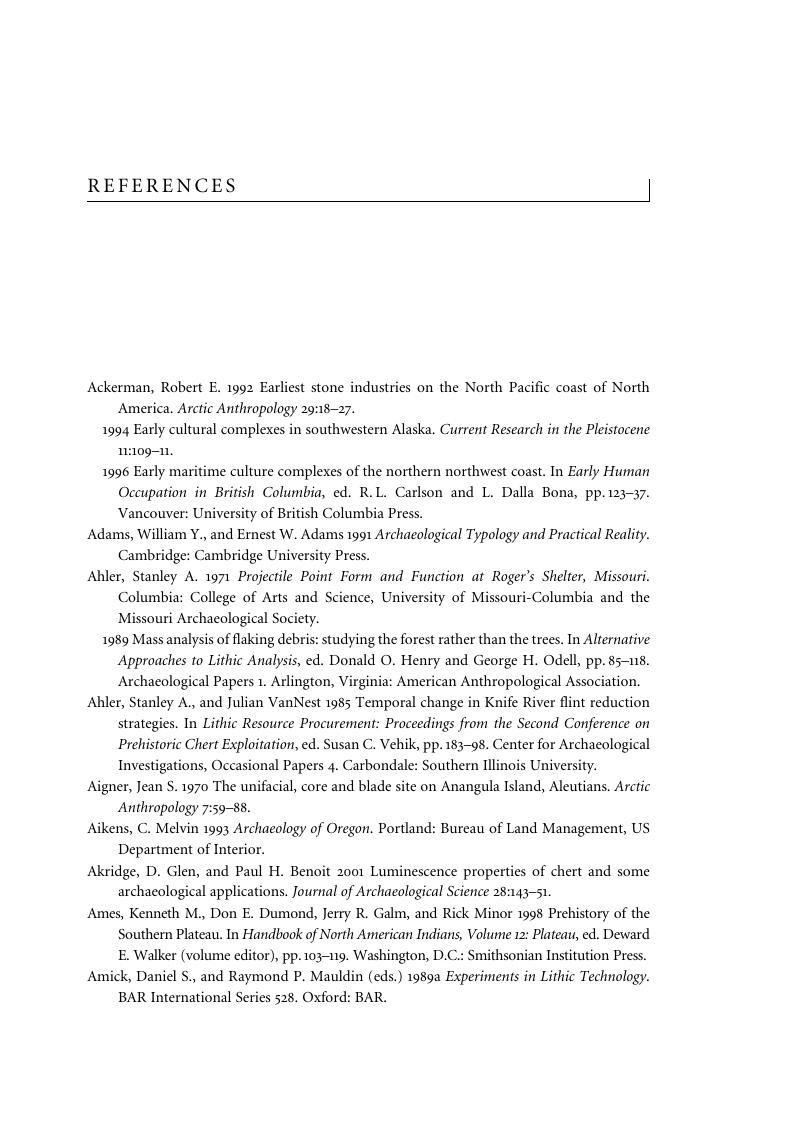Book contents
- Frontmatter
- Contents
- List of figures
- List of tables
- Preface
- Preface to second edition
- Acknowledgments
- 1 A brief introduction to lithic analysis
- 2 Basics of stone tool production
- 3 Lithic raw materials
- 4 Getting started in lithic analysis: identification and classification
- 5 Flake debitage attributes
- 6 Approaches to debitage analysis
- 7 Approaches to stone tool analysis
- 8 Artifact diversity and site function
- 9 Lithic analysis and prehistoric sedentism
- 10 Conclusion
- Glossary
- References
- Index
- References
References
Published online by Cambridge University Press: 05 June 2012
- Frontmatter
- Contents
- List of figures
- List of tables
- Preface
- Preface to second edition
- Acknowledgments
- 1 A brief introduction to lithic analysis
- 2 Basics of stone tool production
- 3 Lithic raw materials
- 4 Getting started in lithic analysis: identification and classification
- 5 Flake debitage attributes
- 6 Approaches to debitage analysis
- 7 Approaches to stone tool analysis
- 8 Artifact diversity and site function
- 9 Lithic analysis and prehistoric sedentism
- 10 Conclusion
- Glossary
- References
- Index
- References
Summary

- Type
- Chapter
- Information
- LithicsMacroscopic Approaches to Analysis, pp. 263 - 295Publisher: Cambridge University PressPrint publication year: 2005



